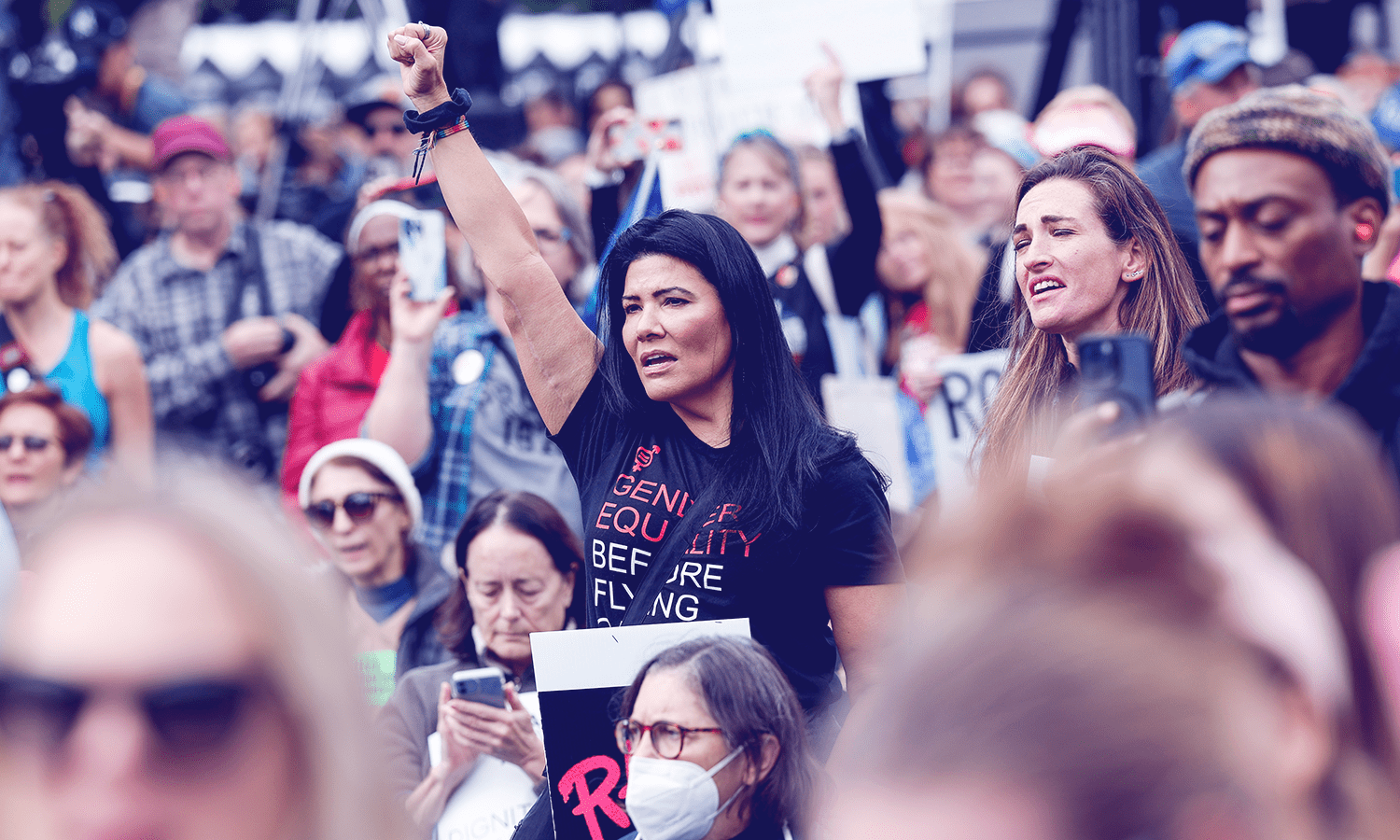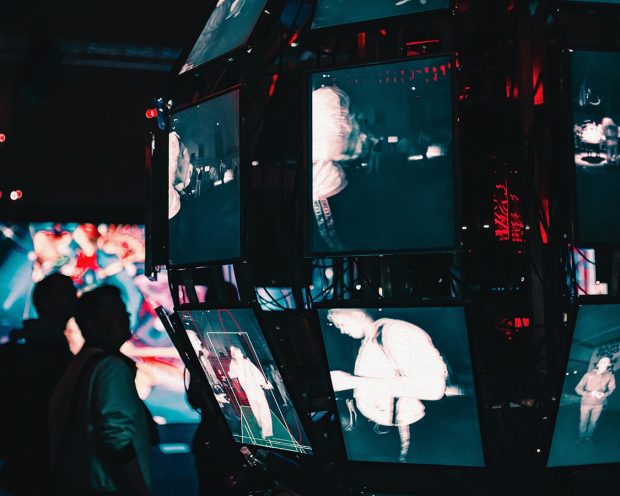The art and science of experiential activism

Monday, January 16, was MLK Day here in the US. The federal holiday is also our country’s only National Day of Service, encouraging Americans to volunteer in their communities and act on Dr. King’s social justice legacy. Much of that social justice work gained traction through peaceful protests. From the Montgomery Bus Boycott and March on Washington to 1965’s Selma to Montgomery march, Dr. King’s activism gathered supporters and contemporaries together in person and used the power of the masses as a key tool to demonstrate that these protests served a purpose.
January also brings the annual Women’s March, which started in 2017 as a worldwide protest against Donald Trump’s presidential policy positions and continues each year to advocate for human rights legislation. The inaugural march was the largest single-day protest in US history, with more than 500,000 people attending in Washington DC and 3 million participating globally.
The right to peacefully protest is a pillar of democracy. While there are too many examples to count — the suffrage movement, Stonewall Inn riots, Vietnam War protests, the Million Man March (and Woman… and Mom…) — the great American experiment is rooted in activism.
And, of course, brands are taking on activism, too.
According to the 2022 Bentley-Gallup Force for Good Survey, 48% of Americans believe businesses should take a public stance on political and social issues, with younger adults more likely to show support. While 48% might not feel like a groundbreaking stat, 88% of Americans surveyed think companies should try and make the world better.
These conscious consumers want and expect brands to raise awareness on issues affecting society and help make positive changes in the world. And while we certainly don’t want to see companies insert themselves into social and political movements for clout or — heaven forbid — profit, there is a way to take action and engage through experiential activism.
Experiential activism focuses on creating direct, immersive experiences that build emotional connections, whether or not there’s corporate backing. The goal is to create in participants a visceral, emotional response that will inspire them to take action, raise awareness about the issue at hand… and garner a bit of media attention, too. Get inspired by these powerful examples of experiential activism, from pro-choice protest to combatting gun violence…
Art installation
Change the Ref, a gun control advocacy group, created an art installation and accompanying video showing people’s reactions to school-shooting greeting cards — a stunt designed to bring awareness to the gun violence epidemic. The organization was created by Manuel and Patricia Oliver, who lost their son Joaquin in the Marjory Stoneman Douglas High School shooting in Parkland, Florida, in February 2018.
This is a very powerful way to use urban art pic.twitter.com/XkIob40zpG
— Fifty Shades of Whey (@davenewworld_2) July 24, 2022
Creative agency YARD NYC stood up against the overturning of Roe v. Wade with their “Stop the Horror” campaign. Posters were plastered all over New York City with satirical takes on existing horror films like Rosemary’s Abortion, CARRIE to Term, and I Know What You Did This Summer.
Public protest
In 2018, the Russian activist group Pussy Riot pulled off a large-scale protest during the World Cup final between France and Croatia in Moscow with four group members running onto the pitch during the match’s second half. As millions of international viewers watched, Pussy Riot claimed responsibility for the stunt on social media, confirming their goal to bring light to human rights abuses in Russia.
Community engagement
LG tapped Lupine Creative to fabricate a mobile podcasting studio, which traveled to four universities to record Transparent Conversations. This four-episode podcast hosted by former student athlete Prim Siripipat explores the intersection of mental wellness, athletics, and academia with D1 athletes, pro athletes, and administrators at NCAA universities.
One of the most insanely cool projects I’ve ever been a part of. Talking mental health/well-being in sports at @LMULions. Thank u to our @loyolamarymount panelists @tairiaflowers, @betsiflint & Dr. William Parham 4 ur candor! #LGTransparentConversations #LGPartner https://t.co/hcrlHrCMef pic.twitter.com/rrNQy8l6q7
— Prim Siripipat (@prim_siripipat) December 15, 2022
In Boston, Santander Bank worked to create awareness and empathy for people classified as working homeless, implementing an AR video experience and inviting the community to track their steps using a pedometer app. Santander donated $10 for every mile walked “in someone else’s shoes.” The money raised was donated to the nonprofit organization Heading Home.
In 2022, Austin, TX-based agency GSD&M launched a campaign that flipped a traditional Mother’s Day card into a call to action for people to speak up on behalf of the pro-choice movement. The agency created a website where visitors could order “Happy Forced Mother’s Day” cards. The site also included a search tool to access visitors’ state representatives’ contact information and mail them a card.
Don’t let #ForcedMothersDay become the reality. Join us at https://t.co/eWI8rdL8vf. (3/3)
— GSD&M (@GSDM) May 6, 2022
Flash mob / dance activism
During the summer of 2020, dance activism went viral in support of the Black Lives Matter movement. Dance scholars, activists, and practitioners began to choreograph, organize and document the phenomenon. Though perhaps it was the first time that so many instances of dance activism were captured and curated digitally, the use of dance in response to social inequity and racism was certainly nothing new. During the ’50s and ’60s, dancers such as Alvin Ailey and Josephine Baker supported the civil rights movement, notably through their stage practices.
It’s worth noting that none of these efforts would work if they weren’t aligned with a brand’s established values and reputation. Without that alignment, even the most well-intended action can come off as virtue signaling and damage reputations further. What does work? What always works? Great storytelling.
Storytelling — in all of the ways showcased above — has the power to capture and retain attention because it’s part of our collective tradition. The most successful experiential activism allows people to connect with inspiring personalities, emotions, and experiences. Well told stories are also memorable and easy to understand, making them useful tools to foster empathy and understanding — the foundations of positive change.
So let’s all get to it, shall we?
Join us in XP Land. A community for experiential creatives and experience-makers, brand leaders and IP-owners, space stewards and venue visionaries — all of those in the business of epic gatherings and live, immersive storytelling.
